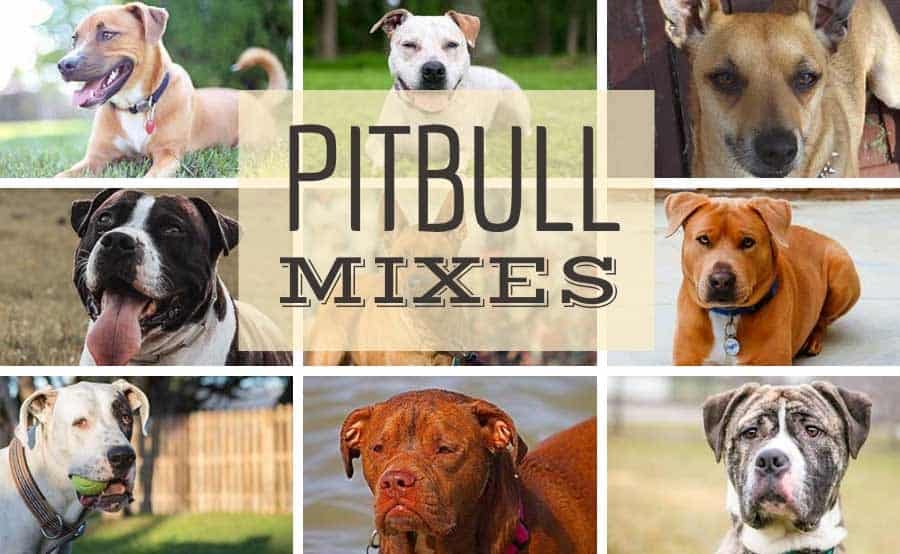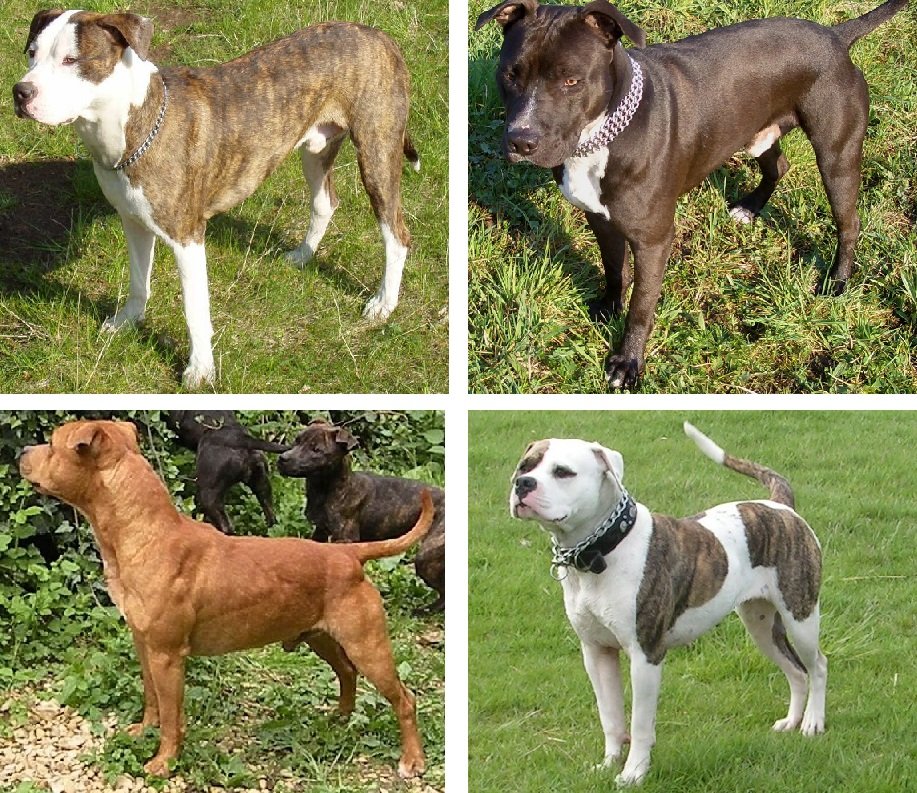Have you ever wondered what happens when a pitbull is crossed with another breed? The result is a fascinating mix of traits and characteristics that make each pitbull cross breed truly unique. These crossbreeds can exhibit a wide range of physical appearances and temperaments, blending the best qualities of both parent breeds. From playful and energetic to loyal and gentle, pitbull cross breeds are an intriguing combination that is sure to captivate any dog enthusiast.
Pitbull cross breeds have a rich history dating back many years, with various breeds being crossed to create unique hybrids. One notable aspect of these crossbreeds is their adaptability – they can thrive in different environments and fulfill various roles, from working dogs to family companions. An interesting statistic shows that pitbull cross breeds often excel in tasks such as search and rescue, agility, and therapy work due to their intelligence and eagerness to please. Whether it’s a pitbull mixed with a Labrador, a boxer, or a bulldog, these crossbreeds bring a fresh perspective and offer a relatable solution for those seeking a loving and loyal companion.

Is Pitbull a Cross Breed?
The pitbull breed is often misunderstood and surrounded by misconceptions. One common question that arises is: “Is pitbull a crossbreed?” In this article, we will explore the history and origins of pitbulls, their genetic makeup, and whether they are considered a crossbreed. By the end, you’ll have a clearer understanding of what defines a pitbull and how it relates to other breeds.
Understanding the Pitbull’s Heritage
The term “pitbull” actually refers to a group of dog breeds that share similar characteristics, such as the American Pit Bull Terrier, Staffordshire Bull Terrier, American Staffordshire Terrier, and Bull Terrier. These breeds trace their roots back to the early 19th century in the United Kingdom. They were developed by crossing various bulldog and terrier breeds to create a dog that possessed strength, agility, and tenacity.
While the pitbull breeds all have common ancestors, their specific genetic makeup can vary. Each breed within the pitbull group has its own distinct characteristics, temperament, and physical appearance. This variety allows for a range of sizes, coat colors, and head shapes within the pitbull family.
It is important to note that despite the term “pitbull” encompassing multiple breeds, not all pitbulls are crossbreeds. Many pitbulls today are bred within their own breed lines, maintaining their lineage and preserving specific traits. However, some individuals may be crossbreeds if they have mixed parentage or have been intentionally bred with other breeds.
Are Pitbulls Crossbreeds?
Pitbull breeds are not inherently crossbreeds. As mentioned earlier, many pitbulls are purebred and come from generations of pitbull lineage. However, there are instances where pitbulls are crossbred intentionally or unintentionally. This can occur when breeders purposely mix pitbulls with other breeds to create new hybrids or when breeding is uncontrolled and results in mixed offspring.
Crossbreeding pitbulls can lead to a combination of characteristics and traits from both breeds involved. While this can result in unique and potentially desirable qualities, it is essential to consider the implications of such crossbreeding. Responsible breeders carefully select the parent dogs to maintain the integrity and health of the breed while ensuring any crossbreeding is done with caution and for the betterment of the dogs.
It is worth noting that certain breed standards and kennel clubs may have specific regulations regarding breeding and registering pitbulls. These guidelines aim to maintain the purity of the breed and prevent excessive crossbreeding.
The Origins of Pitbulls
Pitbull breeds originated from the sport of bull-baiting, which was popular in England in the 18th and 19th centuries. Bulldogs were originally used in this violent activity, but as the sport became illegal, breeders worked towards creating a new type of dog for different purposes. Various terrier and bulldog breeds were selected for their athleticism, strength, and courage.
The result was a group of breeds with the tenacity of terriers and the power of bulldogs. These new dogs were subsequently used for bull-baiting, ratting, herding, and even as companions. Pitbulls gained popularity in the United States and were widely used for bull-baiting until the practice was banned. Over time, they evolved into the loving and loyal family companions we know today.
While the sport of dog fighting unfortunately influenced some pitbulls’ history, it is crucial to understand that this activity does not define the entire breed. Many pitbulls are gentle, friendly, and affectionate when well-socialized and raised in a loving environment. Responsible owners and breeders play a significant role in shaping the behavior and temperament of pitbulls.
Pitbull Myths and Misconceptions
The pitbull breeds have faced unfair stereotypes and misconceptions over the years. It is essential to debunk some of these myths to better understand pitbulls and appreciate their true nature.
Myth 1: Pitbulls have locking jaws – This is a widespread myth that suggests pitbulls have a unique ability to lock their jaws when they bite. In reality, pitbulls have the same jaw structure as other dogs, and their bite strength is not exceptional compared to other breeds.
Myth 2: Pitbulls are inherently aggressive – Like any dog breed, individual pitbulls’ behavior and temperament are influenced by various factors, such as genetics, socialization, and training. While some pitbulls may exhibit aggression, it is not a trait inherent to the breed as a whole.
Myth 3: Pitbulls are not good with children – Pitbulls can be wonderful family pets when properly socialized and trained. They are known for their loyalty and affection towards their human companions, including children. Responsible ownership and appropriate training are key to ensuring a positive and safe relationship between pitbulls and children.
Tips for Owning a Pitbull
If you are considering owning a pitbull or already have one as a part of your family, here are some tips for responsible ownership:
- Socialize and train your pitbull from an early age to ensure proper behavior and temperament.
- Provide regular exercise to keep your pitbull physically and mentally stimulated.
- Use positive reinforcement training methods to encourage good behavior and discourage unwanted behaviors.
- Keep your pitbull on a balanced diet to maintain their overall health and well-being.
- Ensure a safe and secure environment for your pitbull, both indoors and outdoors.
- Regularly visit the veterinarian for vaccinations, check-ups, and preventive care.
- Be a responsible advocate for the breed and educate others about pitbulls to debunk myths and misconceptions.
Conclusion
Pitbulls are a distinct group of breeds that share common origins and characteristics. While there may be instances of pitbulls being crossbred, many pitbulls are purebred. Understanding the history and genetic makeup of pitbulls can help dispel misconceptions and promote responsible ownership. By providing them with proper care, training, and socialization, pitbulls can be wonderful companions and beloved members of the family.
Key Takeaways: Is Pitbull a Crossbreed?
- Pitbulls are often a mix of several breeds, making them a crossbreed.
- Common breeds found in pitbull mixes include Staffordshire Bull Terriers, Bulldogs, and American Pit Bull Terriers.
- Characteristics of pitbull crossbreeds can vary widely, as they inherit traits from their different parent breeds.
- Pitbull crossbreeds can make great family pets with proper training and socialization.
- Understanding the specific breed mix of a pitbull can help owners address any breed-specific health or behavioral concerns.
Frequently Asked Questions
Welcome to our frequently asked questions section on the topic of pitbull cross breeding. Below, you’ll find answers to some common queries related to this topic.
1. What is cross breeding, and how does it apply to pitbulls?
Cross breeding is the process of mating two different breeds of dogs to create offspring with a mix of their traits. In the case of pitbulls, cross breeding refers to mating a pitbull with a dog of another breed.
Pitbull cross breeds, often referred to as mixed breeds, exhibit a combination of characteristics inherited from both the pitbull and the other breed. This can result in a variety of physical and behavioral traits that may vary from one individual to another.
2. What are some common pitbull cross breeds?
There are several popular pitbull cross breeds, each with its unique traits. Some common examples include the Pitbull Lab mix (Labrabull), which combines the athleticism of the pitbull with the intelligence of the Labrador Retriever.
Another popular cross breed is the Pitbull Boxer mix (American Bullboxer), known for its strong, muscular build and energetic nature. Other well-known pitbull cross breeds include the Pitbull German Shepherd mix (Shepherd Pit), Pitbull Husky mix (Pitsky), and the Pitbull Bulldog mix (Bullypit).
3. Are pitbull cross breeds recognized as a separate breed?
No, pitbull cross breeds are not recognized as a separate breed by major kennel clubs such as the American Kennel Club (AKC) or the United Kennel Club (UKC). They are considered mixed breeds or designer breeds.
However, there are organizations and registries that cater specifically to mixed breeds, and some may offer registration or recognition for pitbull cross breeds. It’s important to note that recognition from these organizations does not hold the same significance as being recognized by major kennel clubs.
4. How can I predict the traits of a pitbull cross breed?
One cannot predict the exact traits of a pitbull cross breed with certainty since they inherit a combination of traits from both parent breeds. However, by researching the characteristics of the specific pitbull cross breed you’re interested in, you can gain a general understanding of their potential traits.
It’s also essential to remember that individual variation plays a significant role. Even within the same litter, puppies may exhibit different traits inherited from their parents. It’s advisable to consult with reputable breeders or experienced dog owners who have firsthand knowledge of the specific cross breed you’re considering.
5. What should I consider before getting a pitbull cross breed?
Before getting a pitbull cross breed, it’s important to carefully consider your lifestyle, living situation, and the specific needs of the mixed breed. Each cross breed can have different exercise requirements, temperaments, and grooming needs.
Additionally, do thorough research on the breed’s potential health issues, trainability, and any specific care or training requirements. It’s crucial to ensure that you’re prepared to provide the necessary time, resources, and dedication to meet the needs of your pitbull cross breed for their entire lifetime.

Top 9 Amazing Pitbull Cross Breeds | Pitbull mix breed dogs
Summary
So, to summarize, a pitbull cross breed is when a pitbull dog is bred with another breed. This can result in a mix of characteristics from both breeds and create unique hybrid puppies. However, it’s important to remember that the term “pitbull” is often misused and can refer to different breeds or mixes. Therefore, it’s essential to research and understand the specific breeds involved in a pitbull cross breed to better understand the traits and needs of the dog.
